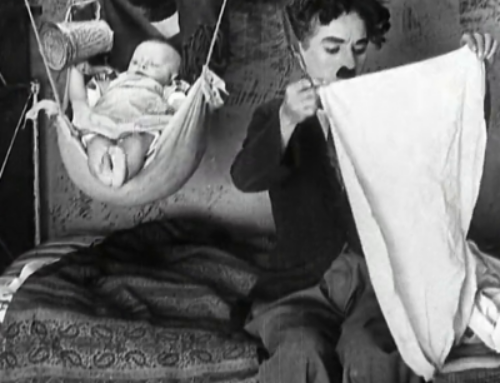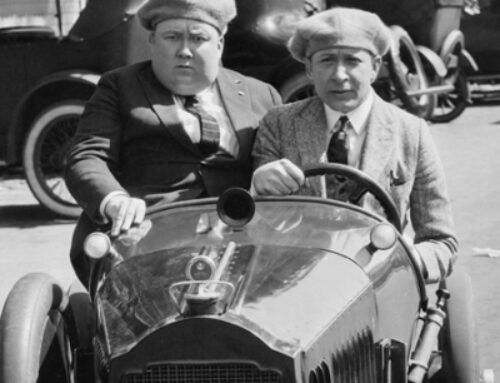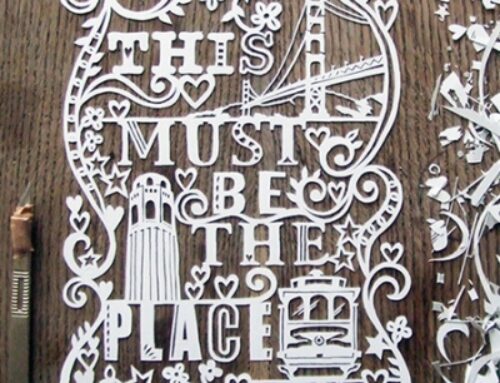It is not only cultural heritage but also environmental heritage that is better preserved if it is included in balanced processes of use by conscious communities. Awareness that is based on knowledge and a sense of shared identity of one’s own territory as a fundamental part of the landscape and the courage to design new uses consistent with ancient forms.
Art Lab 2011, Introductory Report Paolo Castelnovi
In Italy, cultural and environmental assets are mostly considered as ‘heritage not available’ for use, as if plans for use were contrary to conservation and led to the degradation of the asset itself. For some years now, however, the best local development programmes have been based precisely on the landscape and place assets as a useful resource for a sustainable and innovative local economy model. Moreover, as recognised by the IUCN, the World Conservation Union, the most important environmental components are best preserved if they are embedded in balanced processes of use by conscious communities. Awareness that is based on knowledge and a sense of shared identity of one’s own territory as a fundamental part of the landscape and the courage to design new uses that are consistent with ancient forms.
1. Talents to be sold off (this is the title of a book by an emigrant researcher that came out a few months ago): as we are doing for young people we are doing for cultural heritage, of which we have an exceptional and universally recognised stock. We sell off the talents that, in the Gospel parable, were placed as a pledge of the pact between master and servant. The servant must not waste them, but neither must he merely guard them: he must put them to good use. The parable of the talents teaches us the ethics of utilisation: social and sustainable. These are structural adjectives of the very concept of the common good, which is cultural heritage par excellence. It is politically immoral to manage assets that do not entail putting them to social use (as cultural heritage, not as a marginal economic value), just as it is immoral to manage public heritage that leads to its degradation and does not provide for the maintenance of its role as a common good.
So far the best statements of objectives, of policies to which to direct energies. But for some time now we have been mired in the gore of the too slow diffusion of these assessments in common feeling, and above all in the resilience of technicians, who do not easily give way to a consolidated self-referential opinion: the cultural asset must be conserved and I am its conservator, the rest is less important, and in times of crisis it is even superfluous. It is a position that clams up, isolating the good and those who conserve it, a loser in a world where we now see the advantages of networks, dynamic strategies, and policies to dissipate concentrations and impacts. In many cases, one finds oneself in a situation of double constraint: on the one hand, the fear of physically losing the good (cultural or environmental, it makes no difference) if a rigid conservation policy is not implemented, with costs that are now unsustainable; on the other, one sees it lose its use and social value, its status as a common good is forgotten, sometimes even due to the constraints imposed by conservation. As Bateson teaches, one gets out of double constraints by overturning the table, that is, by shifting the playing field where one can play with different rules. In this case, it now seems necessary to shift the focus, the playing field, to the social sharing of reference values, now reduced to an accessory factor, neglected in the strategies of recent decades. We can no longer rely on the ideological climate that accompanied us until the end of the 20th century, when the widespread consideration of abstract concepts such as ‘History’ or ‘Nature’ greatly helped, among other things, the paradigm of heritage conservation. Heritage in the 20th century symbolised, in common culture, first the reconquest of historical and identity values of Homeland, national or local, then the search for a non-predatory or conflictual relationship with the Environment, a reconciliation with Mother Earth.
But those ideologies, which elsewhere have allowed an effective social and shared protection of assets, have in Italy been all too easily curbed and directed towards defending a catalogue of flags, postcard places, beacon species, and World Heritage monuments.
We are surprised and argue about the competence of a minister if a wall collapses in Pompeii, but we have become accustomed to seeing, as we walk down the street, the abandonment of Romanesque churches and 17th-century palaces, the silting up of residual natural sites on the edges of cities, the degradation of public spaces originally designed as places of social and cultural life for entire neighbourhoods. We hail as a hero the particularly capable mayor who manages to channel substantial investment into restoring unique treasures that until 10 years ago were almost in ruins. But we wonder how other heroic mayors in other beautiful cities and countryside will find the money to recover and above all to maintain the recovered.
Faced with the myriad of assets on our territory, we have not built a ‘Cynar culture’ to reduce the wear and tear of modern life. Out of metaphor: we do not know where to locate the diffuse energies needed for the maintenance of our diffuse heritage, not even for recovered assets, especially if they are used as a museum of themselves. That’s it: the task that is now looming is no longer so much recovery as maintenance, especially widespread maintenance, extended to the territory, which is a problem even for recent interventions, once the enthusiasm and investments have died down, which have almost always only popped up on the basis of the emergency and headline culture that has dominated in recent years, but are then lacking when it comes to coping with the erosion and degradation of day-to-day life.
2. So we think that widespread conservation requires a new social consideration of the value of heritage. But this innovation does not occur in the abstract, ideologically: it must happen concretely, in places and situations. It seems to us that the social sharing of a strategy for the use of heritage can only pass through its valorisation in the landscape. We must therefore work on the relations of heritage with the settled and natural surroundings, in which it is contextualised. Not only that, but a complex cultural work awaits us, affecting the collective cultural imaginary in which the perception and memory of the assets are embedded.
In short, it seems to us that the landscape, an inextricable synthesis of the image deposited in the collective memory and of the physical places that arouse it, is the integral container, the only one within which we can politically share overall balances on the effects of the use of our talents, of social enhancement and of economic and environmental sustainability. With these premises takes shape, almost of necessity, a politically incisive strategic line that places the landscape at the centre of a new outlook both for those who work in the fields of cultural heritage and land management, and for those who seek productive models of a better and more sustainable quality of life, work and leisure. On the one hand, for those who work in the cultural heritage and land management sectors, in a public economy in a critical phase, it is now clear: worrying only about the restoration or rehabilitation of a few assets leads to a concentration of costs that prevents the overall maintenance and recovery needs from being met, and thus risks the loss of any positive overall conservation effect. The overall territorial repercussions of restoration work must be broadened and made more perceptible and, above all, a social balance sheet of the results of the interventions must become compulsory. In a regime of scarce resources, intervention choices must refer to an evaluation of the expected effects and a tangible utility of the investments for conservation must be demonstrated. If a systematic evaluation of the outcomes of interventions on the two aspects of the landscape (tangible and intangible) is conducted, the ‘political necessity’ to extend the maintenance of the territory, and thus to make individual restorations and maintenance less costly and more practicable, becomes evident. In any case, even a reduction in unit costs will not suffice: we must move away from a logic of total public burden of maintenance activities, and favour interventions that mobilise private activities and resources. We must plan profitable and innovative uses of the heritage as a whole, in which maintenance is part of the very process of ordinary activities and productive uses, as it has always been historically. Only in particular cases can it be asserted that the usefulness of conservation coincides with the preservation for posterity of the ‘testimony of things’, given that over time the landscape in which ‘things’ are inserted ineluctably changes the sense and value of that testimony. If one reasons from the landscape, the absolute paradigms of the preservation of goods decay and a relativistic vision is adopted with respect to places and times. It becomes essential for conservation strategies to read and make legible the relationships that link heritage to places and those that still connect their times with our times.
In short, the conceptual reorganisation brought about by the focus on the landscape entails a conversion of specialists in restoration, museum management and protected areas: they must abandon the defence of increasingly limited reserves, which they would like to maintain as the place of the orthodoxies of protection. They are required to put their precious expertise at stake for heritage and land management activities for which the effectiveness for the quality of cultural life, local communities’ sense of identity and awareness of their own history is verified, step by step. On the other hand, for those who seek better and more sustainable productive models of a quality of life, work and leisure, the challenge of territorial enterprise looms, participation in strategic actions not so much based on profit and private rents as on:
a. the recognition, systemisation and image promotion of the physical and cultural resources present, at least in trace, in the territory. It is necessary to initiate processes to restructure territorial knowledge, which has so far been neglected in the face of specialist and sectoral knowledge. In order to understand the values attributed to aspects of landscape and heritage, the integration between knowledge and resources at risk of obsolescence, which form the backbone of traditional ways of living, producing and enjoying, must be explored. The structural reading of traditional ways of using the territory should be linked to innovative know-how, referring to the new capacities for initiative, including individual ones, that manage to synthesise local roots with global networks;
b. the promotion of a “public style” of design and use, characterised by an operational, technical, behavioural and economic sobriety of activities, attentive to the footprint on irreproducible components, such as soil or water or the signs of history, but also to the modalities of cultural use that allow widespread enjoyment of assets at low costs, the reduction of spatial and temporal concentrations and low management costs, reducing events and favouring local organisational modalities, even non-professional but diluted over the season and lasting over the years;
c. an innovative capacity to network goods and services and to coordinate the management of public goods (the landscape and in general the territory and common knowledge), which must inform, enable assessments and influence choices between traditionally distant or poorly integrated subjects and towards targets of users that are often poorly and badly informed and selected;
d. the ability to establish public-private agreements on strategic and demanding programmes, in which the public hand makes available (not sells!) its resources against medium- to long-term private management commitments. The business model that such agreements favour is linked to the provision of services and the management of cultural and environmental resources, pursuing general (but also individual) interest objectives of the same order as those that led to the revolution in agricultural management or the provision of city services a century ago. These are historical models of public-private cooperation that have shown widespread benefits, with a solidity and increase in value over the centuries, defying wars and economic crises, and that have helped to keep the imagination cohesive with the construction of the democratic landscape in a process of sharing that helped form the first generations of Italians.
3. With these requirements we are making tests not only for a new project of intervention and management for heritage and landscape, but to develop criteria for another economy, another potential for the development of quality of life in local contexts. By experimenting with management processes with these criteria, we are able to glimpse ways out of the cathartic process to which the institutional and economic crisis is leading us, which is leading entities to disinvest in the cultural sector or even to liquidate their heritage, which is budgeted as a cost centre and lacking in positive projects.
Faced with the last fires of a generation that has only designed things and not their uses and impacts, and has not measured the strategic effectiveness of its investments, neither in a cultural nor in an economic or social sense, the new cultural and environmental project, which uses the landscape as an aggregating and valorising factor, founds its novelty:
– on the awareness of territorial and economic responsibility for any action to qualify heritage,
– on the extension of innovation and proposal not only to things but also to the behaviour of users and operators,
– on the involvement of capital traditionally committed ‘against’ land quality and heritage, whose ‘short ways’ to rents are finally drying up.
The greatest effort that awaits us is precisely to systematise skills and responsibilities in integrated projects, which in any case involve cooperation between different players (public and private, from different sectors, row integration, etc.). Integration between different actors is all the more fruitful the more heterogeneous and complementary their respective sectors of origin are, but for this to happen, the actors must already be won over to the idea of the useful landscape, to the need for skills and strategies to experience its effects in land management. Each on their own behalf must be motivated. But who is interested in promoting skills for the useful landscape?
The local administrator who considers it strategic for his or her municipality to address land management issues on an inter-municipal and cross-sectoral scale, seeking solutions in which the containment of management costs is combined with the provision of new quality services, such as
– the reorganisation of services and public space, based both on rationalisation requirements and on a sharing with the population of the identity and functional values actually required,
– the involvement of public-private operators to elaborate an identity design and a quality use model of built edges, marginal areas and urban voids,
– the involvement of non-profit associations or contracted operators for the maintenance and enhancement of cultural heritage for uses and activities of general interest.
Historical examples: the management model of the Emilian cities from 1950 to 2000; today: episodic experiments (Cascina Cuccagna in Milan, municipalities in the Adige valley in Trentino or neighbourhoods in the Turin belt).
In times of crisis: the local administrator who places quality requirements such as sustainable maintenance costs in the management of public space, including green space, on projects in his or her area, or who seeks to develop programmes for the valorisation of public real estate that are economically viable without selling it off.
The protected area manager, who, in order to achieve the objectives of environmental conservation and enhancement, considers it strategic to address the issues of cultural landscapes and the integration of nature and culture into the landscape and fruition, seeks economically sustainable solutions in which the containment of management costs is combined with the provision of new services, such as:
– the organisation of a tourism and leisure offer that presents, in an integrated manner and with a unified “brand”, aspects of educational visits, opportunities for low-equipment sports, play and adventure proposals for children and the enjoyment of cultural heritage and landscape, also with a programme of events and performing arts experiences,
– the formation of an alternative accommodation offer to the traditional one, with the reuse of underused structures, the establishment of temporary structures for assisted stays in semi-natural places, the formation of ‘basic’ agritourism networks and experimentation in agricultural production.
Historical examples: some French parks, internationally renowned for sports and activities; today, in Italy: the Ente Parchi della Val di Cornia, (Italian Landscape Award for its virtuous management).
In times of crisis: the manager who, faced with the drastic reduction in budget transfers, works to make the organisation’s activities economically sustainable, resorting to alliances with non-profit organisations or sponsored initiatives, but also to economic activities, monitoring their impact. The operator in cultural networks and management, which considers it strategic to generate a ‘system effect’ of culture in the territory, targeting itinerant tourism or in any case a mobile public, seeks solutions in which cost containment is combined with the provision of new services, such as:
– cross-sectoral integration of the offer of goods systems, reinforcing the appeal of single-sector circuits (the Romanesque, the Etruscan Tombs…) in quality landscape contexts rich in places, panoramas, equipment,
– the integration of the offer of events with that of goods, with the ability to root performing arts initiatives, exhibitions or multimedia events in identity places, making them systematic appointments.
Historical examples: the Spoleto festival; today: the Taranta in Salento.
In times of crisis: the operator who, in conditions of scarce resources, seeks territorial and systemic effectiveness by “spreading” repeatable initiatives in different places, networking existing local initiatives, constituting an integrated and unitary offer capable of referring to a target not only local.
The industrial entrepreneur, alone or associated, who considers the organisation and quality of the territory of his district strategic for his production and commercial efficiency, seeking, together with the local authorities, the added value of services such as
– the readability of the even physical image of a positive landscaping of its activities,
– the qualification of production relations resulting from living in places rich in identity and rewarding offers, which attract intelligences and keep creative energies on the territory.
Historical examples, Olivetti’s Ivrea; today: the French Ville Metropole, such as Montpellier or Lille.
In times of crisis: the entrepreneur who, in agreement with the local authority, identifies the public assets his employees care about and prefers, at equal cost, to invest in them, instead of distributing individual benefits.
The rural entrepreneur, alone or in association, who considers a close connection between production and landscape to be strategic, seeking solutions in which cost containment is combined with the provision of new quality services and a capacity for communication aimed at
– establish direct and systematic contacts with consumers (also individual or rather associated) to make them appreciate the quality of their products (direct sales, zero km, agri-tourism, organic markets)
– promote opportunities for ‘citizens’ to enjoy the rural landscape, as a stimulus for the drastic shortening of the supply chain and the commercialisation of ‘cultural’ values linked to plant production (food but also construction, energy, leisure, health).
Historical examples: Garden City as conceived a century ago in England; today: peri-urban production initiatives, organised gardens, the system of household parcels spread around the major French cities.
In times of crisis: the peri-urban farmer who knows how to communicate an offer of savings and quality not only of products but of places for leisure, especially for children and the elderly.
The operator in urban redevelopment processes, usually involved in a public-private decision-making context, who considers the option of building only to achieve quality housing and public space effects as strategic, looking for solutions in which cost containment is combined with the provision of new urban landscape performance, such as:
– the theme of edges, of green (river, mountain) fronts, of urban gates, which from marginal places can become the site of centrality if the specificities of the sites, the recognised signs and the role of places in the established collective imagination are valorised.
– the theme of the identity landscape within the city, constituted by the system of public places, which from being a secondary and complementary outcome of building projects becomes their qualitative driving force, generating added value with respect to a demand not only for residential but also for tertiary and production activities.
Historical examples: the model residential neighbourhoods in major European cities between 1930 and 1960; today: the Catalan Neighbourhoods Project (Llei de Barris), which in a decade has promoted more than 100 interventions to qualify the public space of entire neighbourhoods, with widespread results of growth in real estate values and demand, many times higher than the initial investment.
In times of crisis, with deadlocked real estate markets and non-existent demand for industrial locations, the public-private operator working on the qualification of public spaces (in particular existing green spaces and squares), to improve the urban quality offer of new suburban settlements and make it possible to access new segments of demand (both residential and tertiary/production).
The banking foundation, in particular with local circuits (savings banks, people’s banks, cooperative and rural credit banks), which considers interventions on cultural heritage strategic to its mission, but which also wants to verify their outcomes on the quality of life and the perception of the population, and applying criteria of efficiency and effectiveness of the services, is directed towards promoting specific interventions, which give visibility to a broader target audience to initiatives of
– local development based on the tourist use of cultural or environmental resources,
– qualification of the use of cultural or environmental sites and assets
In times of crisis, the banking foundation which, in addition to investment restraint, accompanies policies for the valorisation and usability of rehabilitation and restoration projects already started or completed, initiatives for their perception by the public, or for the enlargement of the public with the inclusion of the projects in circuits or processes of widespread and extended visibility




